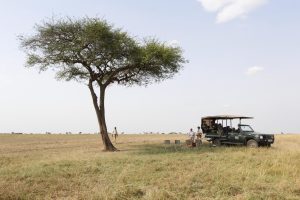Optimal Timing for Safari in Tanzania
If you are considering embarking on a safari adventure in Tanzania, it is essential to carefully plan the timing of your trip to ensure that you have the best possible experience. Tanzania is home to some of the most incredible wildlife and natural landscapes in the world, and choosing the right time to visit can greatly enhance your safari experience. In this article, we will discuss the best times to visit Tanzania for safari and the factors that influence optimal safari timing.
Best Times to Visit Tanzania for Safari
The best time to visit Tanzania for safari largely depends on what you hope to see and experience during your trip. The country’s climate is divided into two main seasons: the dry season and the wet season. The dry season, which runs from June to October, is generally considered the best time for safari due to the excellent game viewing opportunities. During this time, the vegetation is sparse, making it easier to spot wildlife, and animals tend to congregate around water sources, providing ample opportunities for sightings.
The wet season, which occurs from November to May, brings heavy rains to Tanzania. While the wet season may not be as popular for safari, it does offer its own unique advantages. The landscape is lush and green, making for beautiful scenery, and many animals give birth during this time, leading to an increase in baby animals in the parks.
For those looking to witness the Great Migration, where millions of wildebeest and zebra move across the Serengeti in search of food and water, the best time to visit Tanzania is typically between December and March when the herds are calving in the southern Serengeti. From June to August, the herds begin to move north towards Kenya’s Masai Mara, offering another opportunity to witness this incredible natural phenomenon.
Factors Influencing Optimal Safari Timing
Several factors can influence the optimal timing for a safari in Tanzania. One key consideration is the availability of accommodations and tour operators. Popular safari lodges and camps can book up quickly during the peak season, so it is essential to plan your trip well in advance to secure your preferred accommodations.
Another factor to consider is the cost of safari during different times of the year. Peak season, when game viewing is at its best, often comes with higher prices for accommodations and tours. If you are looking to save money, traveling during the shoulder seasons of April to May and November may provide more budget-friendly options.
Lastly, personal preferences and interests should also play a role in determining the optimal timing for your safari. Whether you want to witness specific wildlife behaviors, experience different landscapes, or avoid crowds, it is essential to consider what is most important to you when planning your trip to Tanzania.
In conclusion, the optimal timing for a safari in Tanzania depends on a variety of factors, including the best times for game viewing, the availability of accommodations, and personal preferences. By carefully considering these factors and planning your trip accordingly, you can ensure that you have the best possible safari experience in this incredible destination.
For booking requests or more information on planning your safari in Tanzania, contact Sunset Africa Safari at info@sunsetafricasafari.com.


